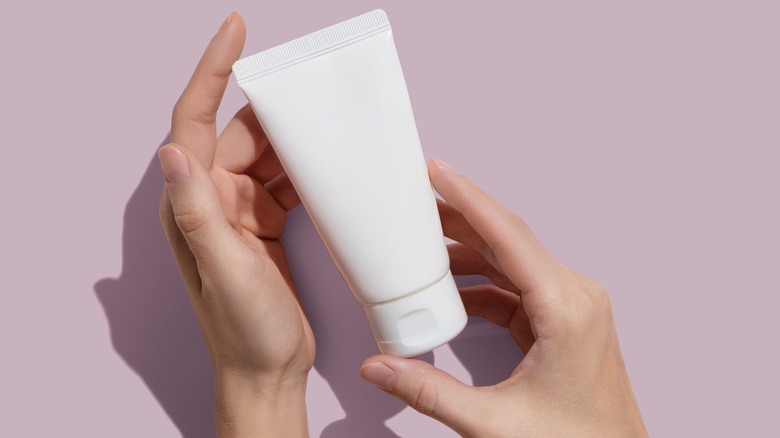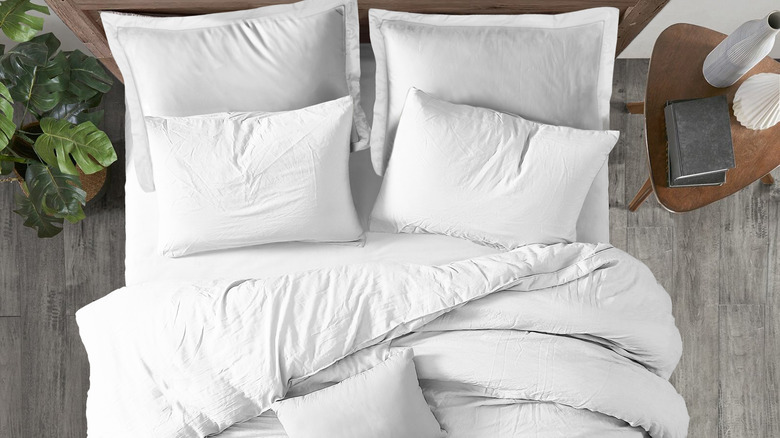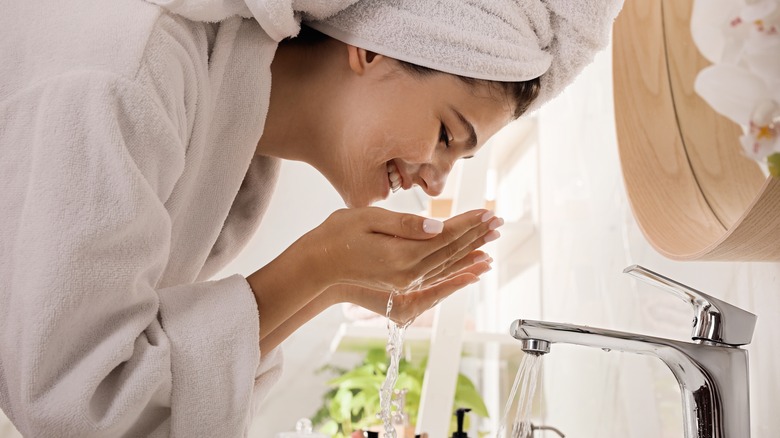How To Prevent Your Acne Treatment From Staining Your Clothing And Towels
Different skincare products may serve different purposes depending on the issue you're targeting, but some may be stronger than others. This is usually the case for acne treatments as they use some stronger formulas and ingredients. Benzoyl peroxide, which usually comes in the form of a gel, cleanser, or cream, is one of them. You may have used it before and noticed some stains on your sheets, towels, and even your clothes. This is because benzoyl peroxide is a strong chemical compound meant to kill the bacteria on your skin, and because it is a peroxide, it tends to have bleaching effects. In fact, even when it's dry or washed off, it still has a chance to linger enough to do so (via Silver Bobbin).
This can be frustrating to deal with, but you don't have to choose between continuing your treatment and the fabrics around you. There are certainly ways to help prevent these bleach stains from happening. It just takes a little bit of effort.
Change up your linens and laundry habits
Your colored bed sheets, towels, and clothes may have the worst stain results from the benzoyl peroxide treatment because of their direct contact with the product on your skin. Natural fabrics may be more easily bleached, but synthetic ones are still at risk.
One way to help avoid the stains is by changing your linens. Try using white bed sheets and towels because they can't be as easily bleached by benzoyl peroxide. For your clothes, wear a white undershirt or another layer between your skin and your colored clothes. If you're not using benzoyl peroxide every day, use your white clothes on the days or nights that you do. For nighttime use, try wearing old pajamas or t-shirts that won't matter if they get stained (via L'Oréal Paris).
If you just can't give up color, there is still a solution for you. You can get sheets and towels made with fabrics that are resistant to benzoyl peroxide bleaching. This stain-resistant material will help keep the vibrant colors strong. However, you can continue using your colored bed sheets that are not made with this material by using a white towel as a barrier between your skin and the sheets. Be careful not to cross-contaminate the side with the benzoyl peroxide with your regular sheets. In fact, when doing laundry, split your sheets, towels, and garments between those that came in contact with the benzoyl peroxide and those that didn't (via Hunker).
Change your treatment method
If the stains are becoming too much for you to handle, you might need to consider changing your acne treatment. Consider prescription treatments, topical retinoids, or topical antibiotics instead. However, you should keep in mind that benzoyl peroxide is one of the most effective treatments for acne. Because of this, you should meet with a dermatologist to thoroughly consider all your options with a professional for a benzoyl peroxide-free skin care product.
Another solution to try is using your benzoyl peroxide treatment in intervals. This can look like using it every other day, every two days, or only at night. On the same note, you can try using a wash-off benzoyl peroxide cleanser instead of a cream or gel that stays on your skin. This gives you time in between in which you won't bleach your fabric goods, as well as fewer days where you have to go through the struggle of trying to avoid it in the first place (via the United Kingdom's National Health Service).


